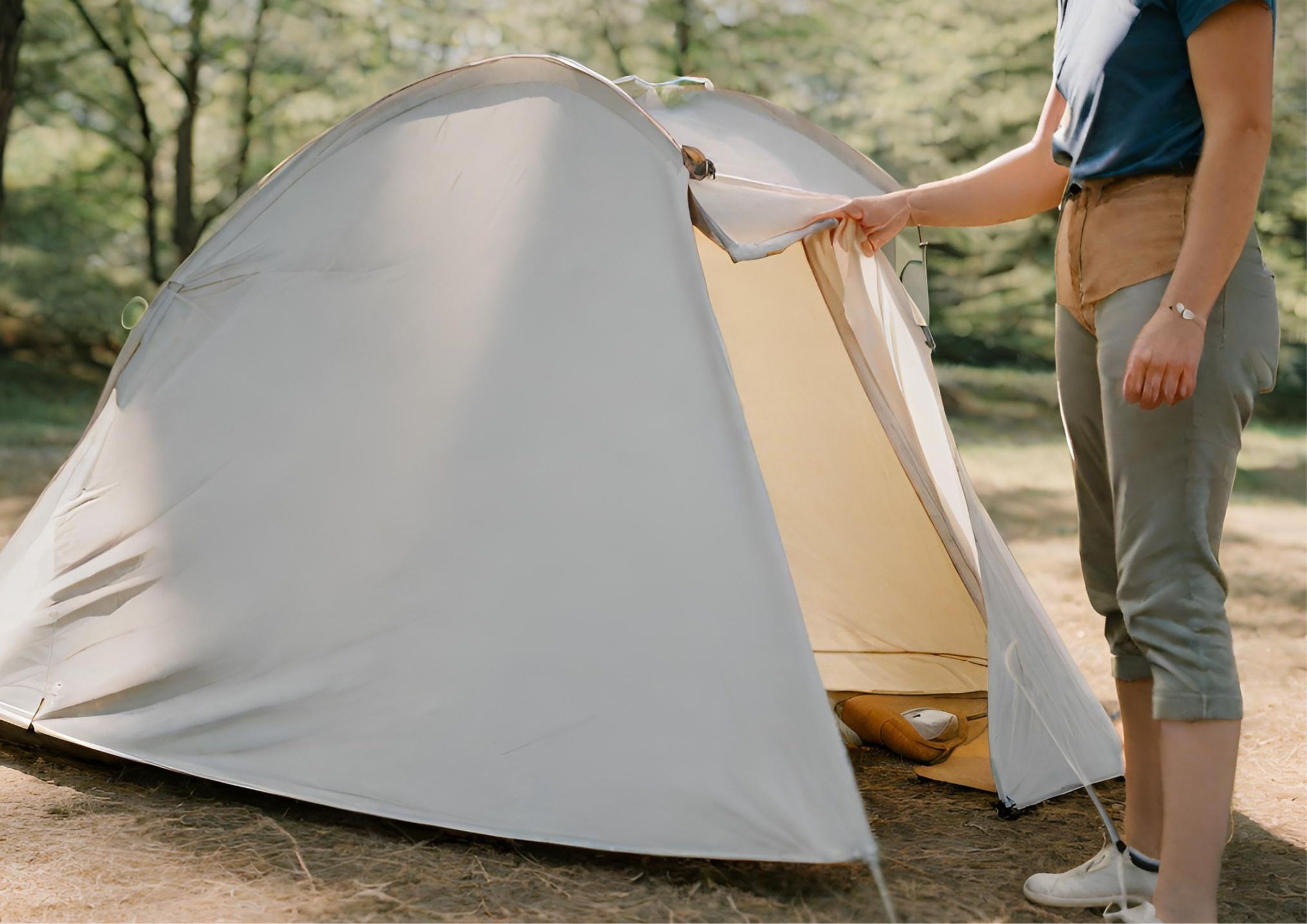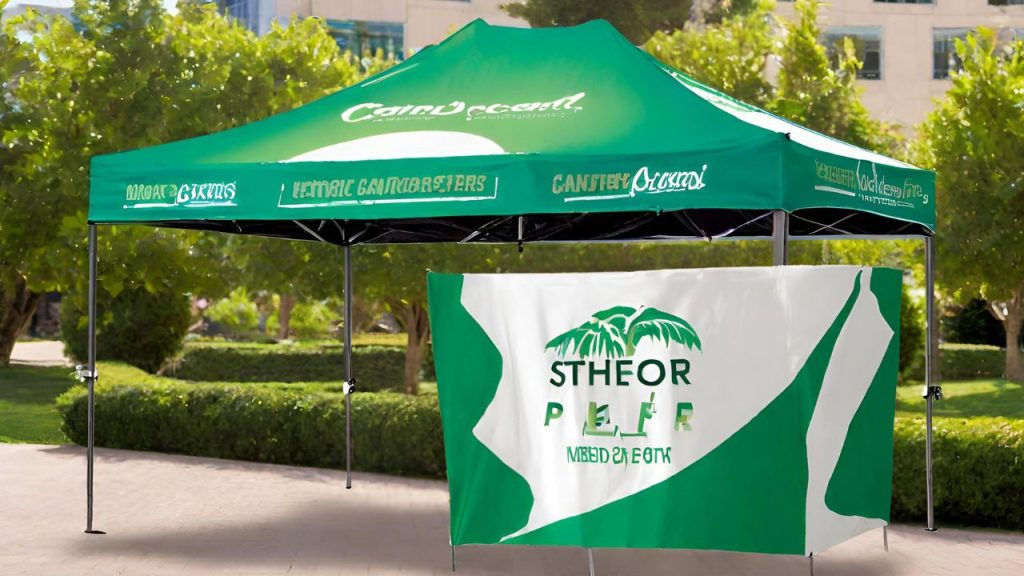As an Amazon Associate I earn from qualifying purchases.
Pop-up tents are a convenient and quick solution for outdoor shelter, but the real challenge often comes when it’s time to pack them away. Knowing how to close a pop-up tent properly is crucial for maintaining its longevity and ensuring stress-free future setups.

Table of Contents
ToggleUnderstanding Your Pop-Up Tent
Before diving into the closing process, it’s essential to understand the type of pop-up tent you have. Different tents may have variations in their closure mechanisms and features. Familiarize yourself with the components, such as the frame, fabric, and any additional features unique to your tent.
Step-by-Step Guide: Closing a Pop-Up Tent
Closing a pop-up tent doesn’t have to be a daunting task. For an easy procedure, follow to these guidelines :
Step 1: Clear the Interior:
Before attempting to close your pop-up tent, remove all personal belongings, sleeping bags, and other gear from the interior. This ensures a smooth and unobstructed folding process.
Step 2: Remove Stakes and Guy Lines:
Detach any stakes and guy lines securing the tent to the ground. This will make it easier to collapse the tent without any tangled or caught components.
Step 3: Identify the Folding Mechanism:
Examine your pop-up tent to understand its folding mechanism. Most pop-up tents use a hub system or a combination of poles and connectors. Familiarizing yourself with the structure will make the closing process more straightforward.
Step 4: Collapse the Roof:
Gently press down on the center of the roof, engaging the hub or folding mechanism. Apply even pressure to collapse the roof towards the center of the tent.
Step 5: Fold the Poles:
If your pop-up tent has additional poles, collapse them in the same manner. Many tents feature color-coded or numbered poles for easy identification. Follow the sequence to fold each pole systematically.
Step 6: Flatten the Tent:
Once the roof and poles are collapsed, flatten the tent by pressing down on the sides. Ensure that all air is expelled, making the tent as compact as possible.
Step 7: Secure Straps or Bands:
Most pop-up tents come with integrated straps or bands to secure the collapsed structure. Wrap these around the tent to keep it in a compact and folded position.
Step 8: Stow Away in Carry Bag:
If your pop-up tent includes a carry bag, place the folded tent inside. Pay attention to any specific folding instructions provided by the manufacturer to ensure a snug fit.
Step 9: Double-Check for Accessories:
Before packing away your pop-up tent, double-check that all accessories such as rainflies, stakes, and guy lines are accounted for and stored in their designated compartments.
Step 10: Practice Makes Perfect:
Closing a pop-up tent may require a bit of practice. Familiarize yourself with the process in a controlled environment before heading out on your camping trip. This will help you streamline the procedure and save time at the campsite.
Closing a pop-up tent doesn’t have to be a daunting task. By following these 10 simple steps and practicing the process, you’ll be able to close your pop-up tent efficiently, ensuring a stress-free camping experience. Enjoy the great outdoors with the confidence that you can easily set up and take down your shelter whenever the adventure calls.
Common Mistakes to Avoid
While closing a pop-up tent may seem straightforward, several common mistakes can compromise the tent’s integrity:
• Overlooking the Instructions: Always refer to the manufacturer’s instructions. Each tent is unique, and skipping steps can lead to damage.
• Neglecting Proper Cleaning Before Storage: Dirt and moisture can damage the fabric over time. Before setting the tent away, give it a thorough cleaning.
• Rushing the Process: Take your time. Rushing the closing process may result in bent frames or fabric tears.
Tips for Prolonging Pop-Up Tent Lifespan
Ensuring the longevity of your pop-up tent involves more than just proper closure. Consider the following tips:
• Proper Cleaning and Maintenance: Regularly clean your tent and inspect it for any signs of wear and tear. Address any issues promptly.
• Storing in a Cool, Dry Place: Avoid storing your tent in direct sunlight or damp areas. A cool, dry place helps prevent mold and mildew.
• Regularly Inspecting for Wear and Tear: Perform routine checks on the tent’s components. Replace any worn-out parts to maintain functionality.
Dealing with Tricky Situations
Sometimes, you may encounter challenges while closing your pop-up tent:
• Closing a Wet Pop-Up Tent: If your tent is wet, set it up to dry as soon as possible. Closing a wet tent promotes mold growth and damages the fabric.
• Handling a Jammed Mechanism: Gently wiggle or tap any jammed parts. Avoid using excessive force, as this could lead to breakage.
• Repairing Minor Damages: Small tears or bent components can often be repaired at home. Follow DIY repair guides provided by the manufacturer.
Benefits of Properly Closing Your Pop-Up Tent
Understanding the importance of proper closure goes beyond the immediate task. Benefits include:
• Extending Tent Durability: A well-maintained tent lasts longer, providing value for your investment.
• Ensuring Hassle-Free Future Setups: Properly closed tents are easier to set up in the future, saving time and effort.
• Maintaining Functionality: Regular maintenance and closure ensure all components function as intended.
Innovations in Pop-Up Tent Technology
Recent advancements in pop-up tent technology aim to make the camping experience even more enjoyable:
• Advanced Closure Mechanisms: Some tents now feature automated closure mechanisms for effortless packing.
• Weather-Resistant Materials: Improved materials enhance durability and weather resistance, ensuring your tent stands up to the elements.
• Smart Features for Easy Use: Integration with smart devices and technology simplifies the setup and closure process.
Selecting the Ideal Pop-Up Tent for Your Requirements
When shopping for a pop-up tent, consider the following factors:
• Size Considerations: Choose a size that accommodates your group comfortably.
• Durability and Weather Resistance: Look for tents made from high-quality, weather-resistant materials.
• User-Friendly Features: Opt for tents with easy-to-use closure mechanisms and additional features that enhance usability.
Real-Life Experiences
Hearing from other campers about their experiences can provide valuable insights:
• Testimonials from Users: Users often share their experiences with specific tent models, highlighting the importance of proper closure.
• Lessons Learned from Mishaps: Learn from others’ mistakes and mishaps to avoid common pitfalls.
Environmental Impact of Pop-Up Tents
As outdoor enthusiasts, it’s essential to consider the environmental impact of our gear:
• Sustainable Materials and Manufacturing: Choose tents made from eco-friendly materials and manufactured using sustainable practices.
• Proper Disposal and Recycling: When it’s time to replace your tent, ensure it is disposed of or recycled properly.
DIY Repairs and Maintenance
Keeping your pop-up tent in top condition doesn’t always require professional help:
• Patching Small Tears: Use tent repair kits to patch small tears in the fabric.
• Lubricating Moving Parts: Keep hinges and moving parts well-lubricated to prevent stiffness.
• Replacing Worn-Out Components: Replace any components showing signs of wear to maintain the tent’s structural integrity.
Pop-Up Tent Safety Measures
Ensuring the safety of yourself and others while using a pop-up tent is paramount:
• Securing the Tent in Windy Conditions: Use stakes and guy lines to secure the tent in windy conditions.
• Keeping Away from Fire Hazards: Maintain a safe distance from open flames to prevent accidents.
• Checking for Pests Before Packing: Inspect your tent for insects or small animals before packing it away to avoid surprises on your next camping trip.
In conclusion, knowing how to close a pop-up tent properly is a skill every camper should possess. It not only ensures the longevity of your gear but also contributes to a safer and more enjoyable outdoor experience. Take the time to understand your tent, follow the proper closure steps, and incorporate regular maintenance into your camping routine.
FAQs
1. How do I identify the folding mechanism of my pop-up tent?
Answer: Look for visual cues on your tent, such as a hub system, color-coded poles, or numbered connectors. Consulting the tent’s manual will also provide guidance on understanding the specific folding mechanism used.
2. Are there any tips for collapsing the roof of a pop-up tent?
Answer: Apply even pressure to the center of the roof to engage the folding mechanism. This will facilitate the collapse of the roof towards the center of the tent, a crucial step in the closing process.
3. What should I do if my pop-up tent has additional poles?
Answer: If your tent includes extra poles, follow a systematic approach to collapse them. Many tents have color-coded poles or a designated sequence for folding. Pay attention to these indicators to ensure a smooth closing experience.
4. How do I secure my pop-up tent during the folding process?
Answer: Most pop-up tents come with integrated straps or bands. After collapsing the roof and poles, use these straps to secure the folded structure. This step is essential to keep the tent compact and ready for storage.
5. Should I practice closing my pop-up tent before using it at the campsite?
Answer: Yes, it’s advisable to practice closing your pop-up tent in a controlled environment before heading to the campsite. Familiarizing yourself with the steps ensures a smoother experience during your outdoor adventures and helps avoid frustration when setting up or taking down the tent.
As an Amazon Associate I earn from qualifying purchases.



Reader Interactions